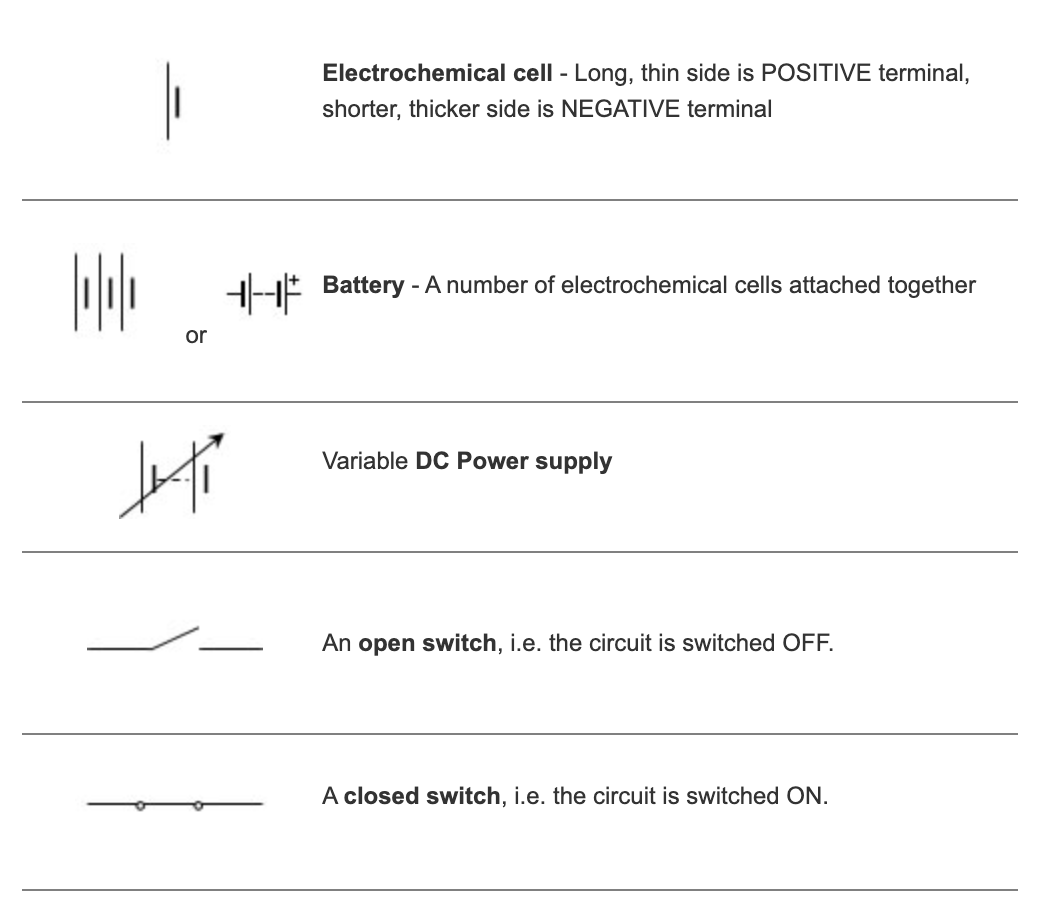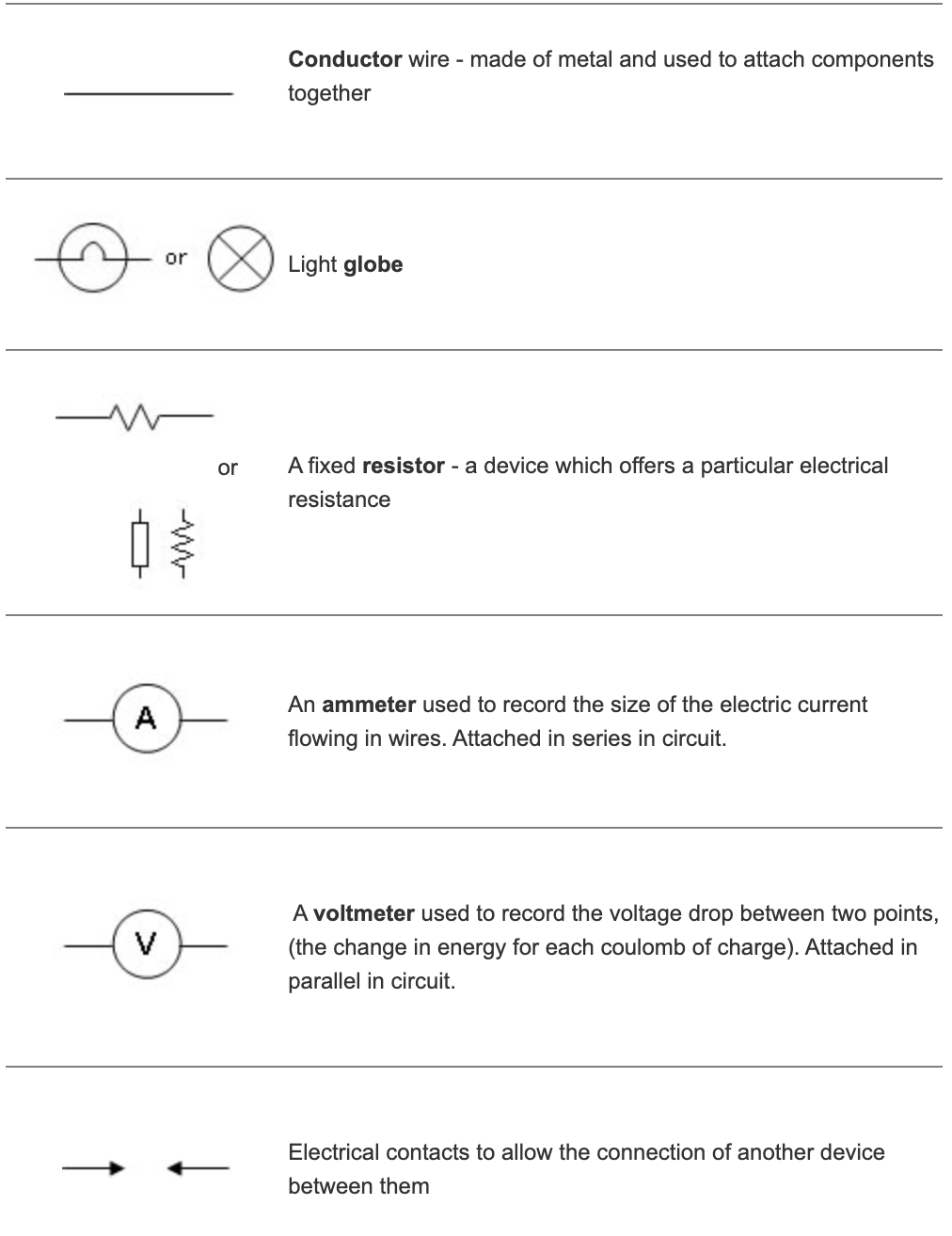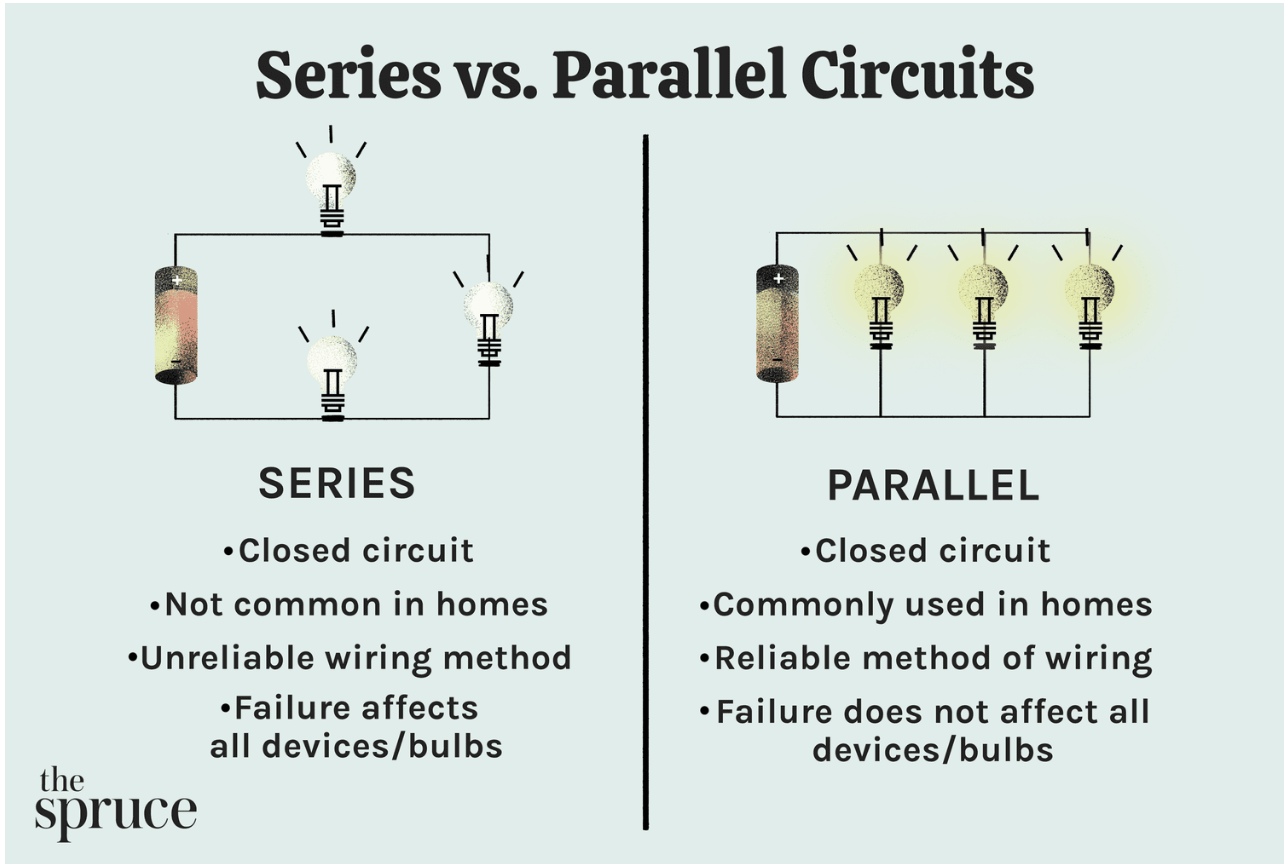Science: Electricity test
Electric circuits basics
What are the key components of an electric circuit?
Battery, conducting path, load
The difference between closed and open circuits?
Closed Circuit: A complete loop where electrons can flow from one terminal of the power source to the other, allowing current to pass through the circuit.
Open Circuit: A break in the path that stops the flow of current. This could be caused by a switch in the "off" position or a broken wire.
Current
Current is the flow of electric charge (typically electrons) through a conducting path. It’s measured in amperes (A) or milliamperes (mA), where 1 A = 1 coulomb/second.
In a Series Circuit: Current is the same throughout all components because there’s only one path for it to follow. In a Parallel Circuit: The total current is the sum of the currents in all branches, but the current differs based on the resistance of each branch.
Voltage
Voltage is a measure of electric potential difference between two points. It provides the "push" that drives electrons through a circuit. It’s measured in volts (V).The amount of voltage "used" or dropped across the components in a circuit equals the total voltage provided by the battery.
Conventional and electron current
Electron Current (Real Current): Correctly describes the movement of electrons from the negative (-) terminal (anode) to the positive (+) terminal (cathode) in a circuit.
Conventional Current: Describes the flow of positive charge, even though it’s actually the electrons moving. This older convention is still used in most calculations.
Measuring voltage and current
Voltameter
Measures the electric potential difference (voltage) between two points in a circuit. It is connected in parallel and has high resistance to minimise the current it draws from the circuit.
Ammeter
Measures the current in a circuit. It is connected in series with the circuit to measure the flow of current directly, in amperes (A).
Circuit diagrams


Series vs parallel circuits

Parallel
Definition: In a parallel circuit, components are connected across multiple paths, so the current can flow through different branches.
Current: The total current is divided among the different branches, and each branch can carry a different amount of current depending on its resistance.
Voltage: Each component in a parallel circuit receives the same voltage because they are all connected directly across the power source.
Resistance: The total resistance of a parallel circuit is less than the smallest individual resistance. Adding more branches decreases the total resistance.
Series
Definition: In a series circuit, all components (like resistors, bulbs, or batteries) are connected end-to-end, forming a single path for the current to flow.
Current: The same current flows through each component because there's only one path.
Voltage: The total voltage of the circuit is divided among the components, so each component gets a portion of the total voltage.
Resistance: The total resistance of a series circuit is the sum of the individual resistances, meaning the more components you add, the higher the total resistance.
Resistance and ohms law
Resistance
When electrons flow through a conductor, they bump into the particles that form it. The more particles in the way, the fewer electrons can get through, this creates resistance. These collisions cause electrons to loose energy in the form of heat and work against voltage.
Conductivity
Definition: Conductivity is the ability of a material to allow the flow of electric current. Materials with high conductivity (called conductors) have free electrons that move easily, allowing electricity to pass through them with little resistance.
Examples: Metals like copper, aluminium, and gold are good conductors due to their abundance of free-moving electrons.
Insulation
Definition: Insulation refers to the ability of a material to resist the flow of electricity. Insulators have tightly bound electrons that do not move freely, preventing the passage of electrical current.
Examples: Rubber, glass, and plastic are common insulators used to coat wires and prevent electric shocks.
What makes good insulators?
Free Electrons: When there is single electron in its outermost shell, which is loosely bound to the atom, allowing it to move easily between atoms, facilitating the flow of electricity.
Low Resistance, meaning that electrical energy can travel through it with minimal loss as heat.
Durability and Malleability: Copper is durable, flexible, and easy to work with, making it ideal for wiring and other electrical components.
Ohms law



What is the importance of battery/appliance voltage
If the battery outputs too much voltage to a load’s recommended voltage without an insulator, it can cause the load to overheat, and even catch fire. It is important that a resistor brings down the circuits voltage to the correct amount to ensure the appliance function properly and to prevent overheating.
there is non ohmic and ohmic resisters. Non ohmic doesnt follow.
voltage is iinversley proportional to resistance
voltage is proportainal to current.
 Knowt
Knowt